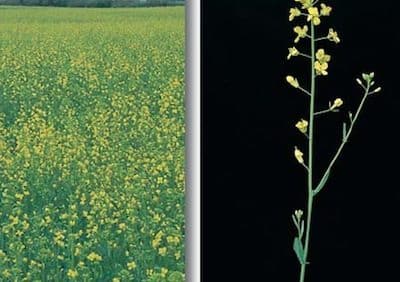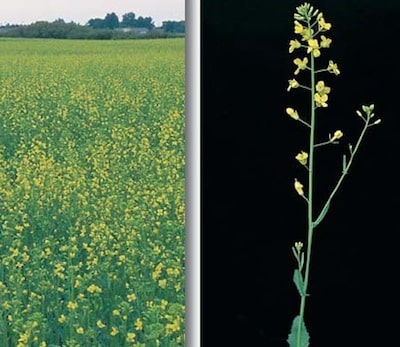
1. Flowering percentage to determine timing for fungicide. The photo above shows canola at 20% flower, which is when the application window opens. To assess flowering progress, concentrate on the main stem only. Count all flowers, including aborted flowers and developing pods. With 15 flowers main stem, the field is around 20% flower.
2. Canopy wetness to see whether a fungicide is warranted. More on morning dew and the sclerotinia risk.
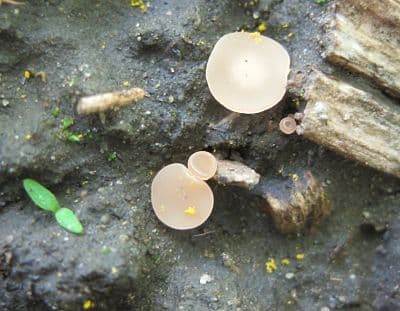
3. Apothecia (shown above) in adjacent fields that had canola last year. This is another hint at the sclerotinia stem rot risk. Apothecia monitoring depots.
4. Flower deformities, which could result from fertility, heat and insect issues. Read “Why the missing pods?” for more possibilities.
5. Dying or clearly stressed plants. In severe clubroot cases, you should see plants dying now. Dig up the roots and take a look for galls.
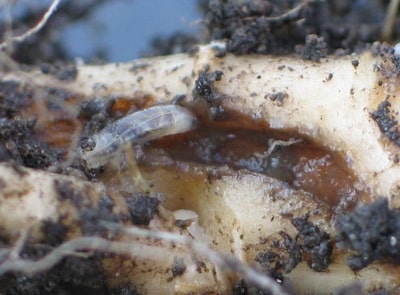
6. Cabbage root maggot, shown above. If clubroot galls aren’t obvious on these dying plants, how about root maggots?
7. Cabbage seedpod weevil. Southern Alberta and Southwest Saskatchewan are seeing some hot spots. Spray decision tips.
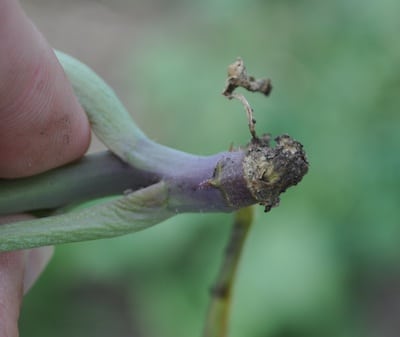
8. Brown girdling root rot and foot rot. Canola plants pinched off at ground level likely have rhizoctonia foot rot (shown in the photo above.) Another possibility is brown girdling root rot (BGRR), a similar infection caused by the complex of rhizoctonia, pythium and fusarium, producing a characteristic brown root. Growers have no management options for this season, but if they’re seeing high rates of disease, note that these diseases can be much higher in tight canola rotations. More on major diseases seen in July.
9. Herbicide efficacy. Did some weeds not get controlled the way you expected? Review timing, rates and products. Check on their efficacy against these weeds. If the product should have worked, are the weeds resistant?
10. Is the crop recovering from excess moisture? Agronomy response.
Honourable mention: Diamondback moth larvae. They are at low numbers but worth scouting.

